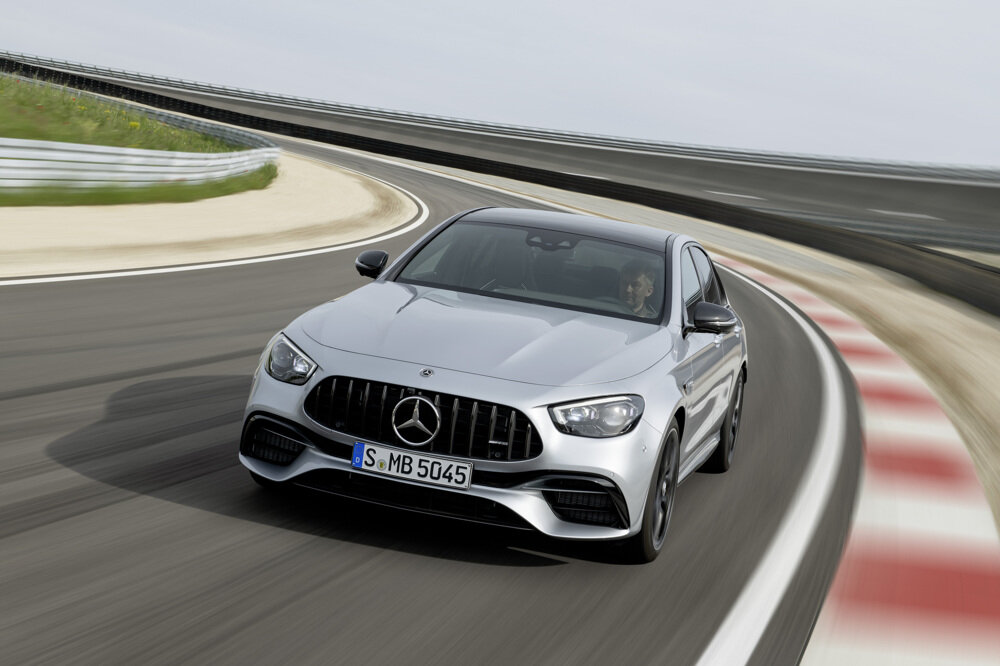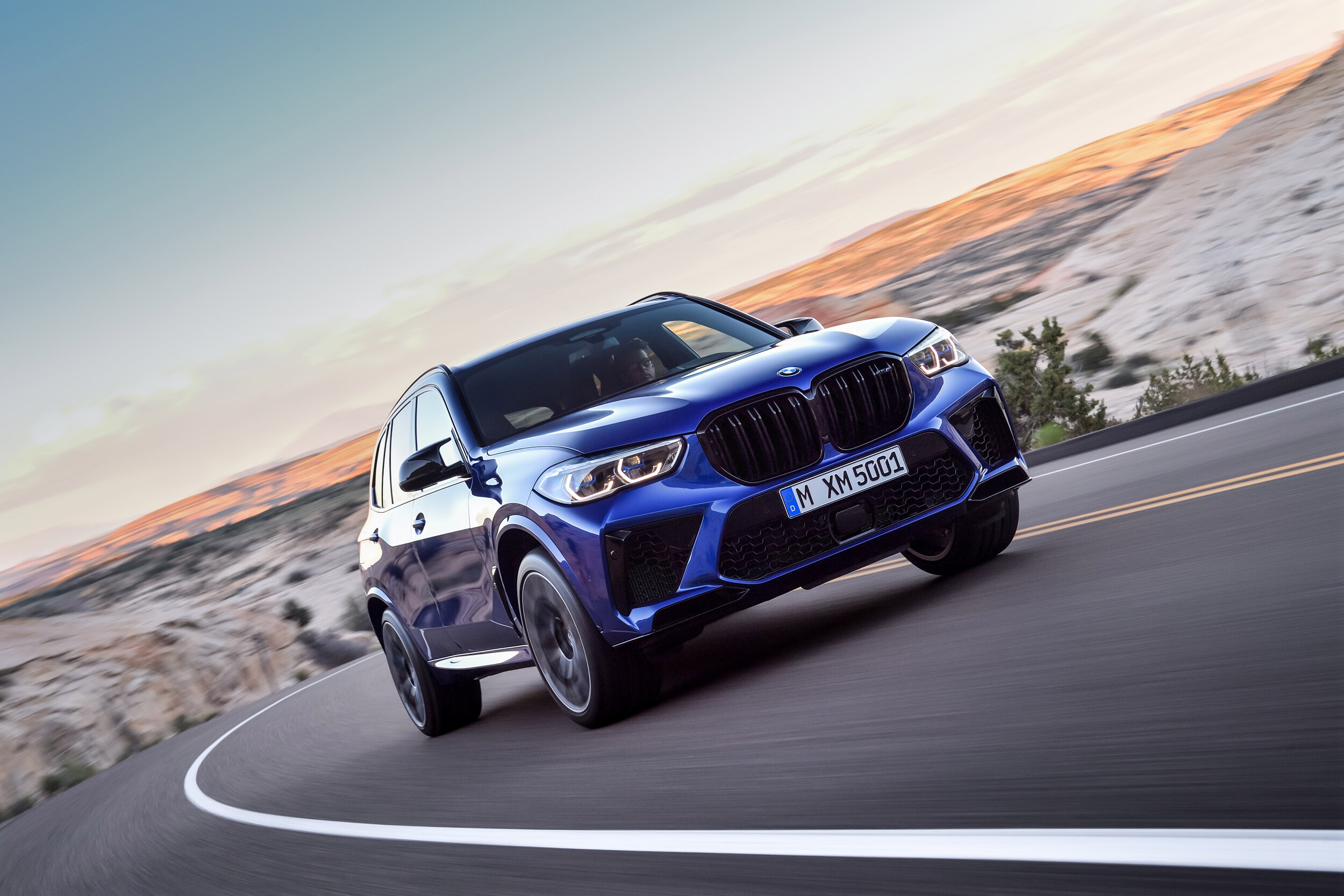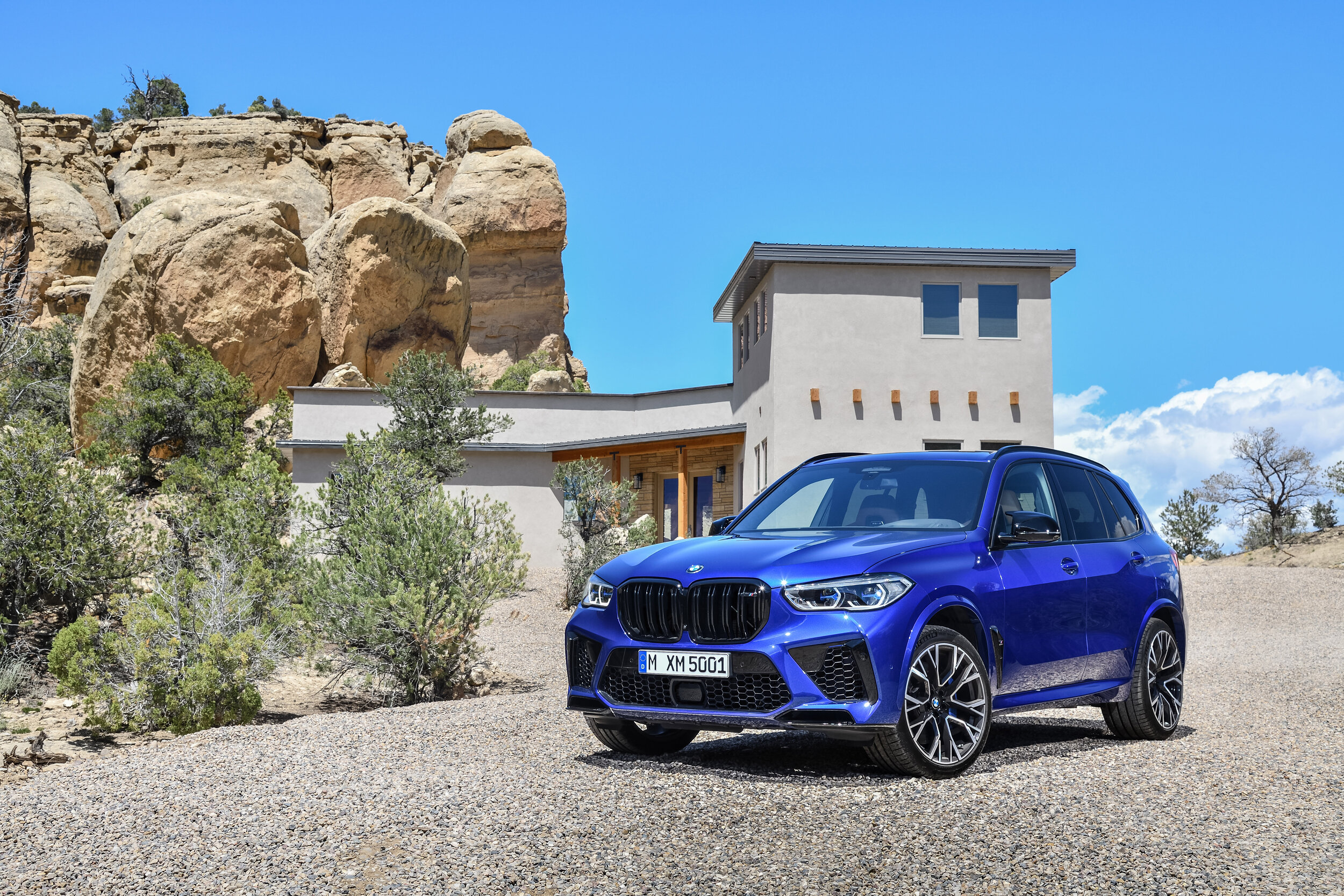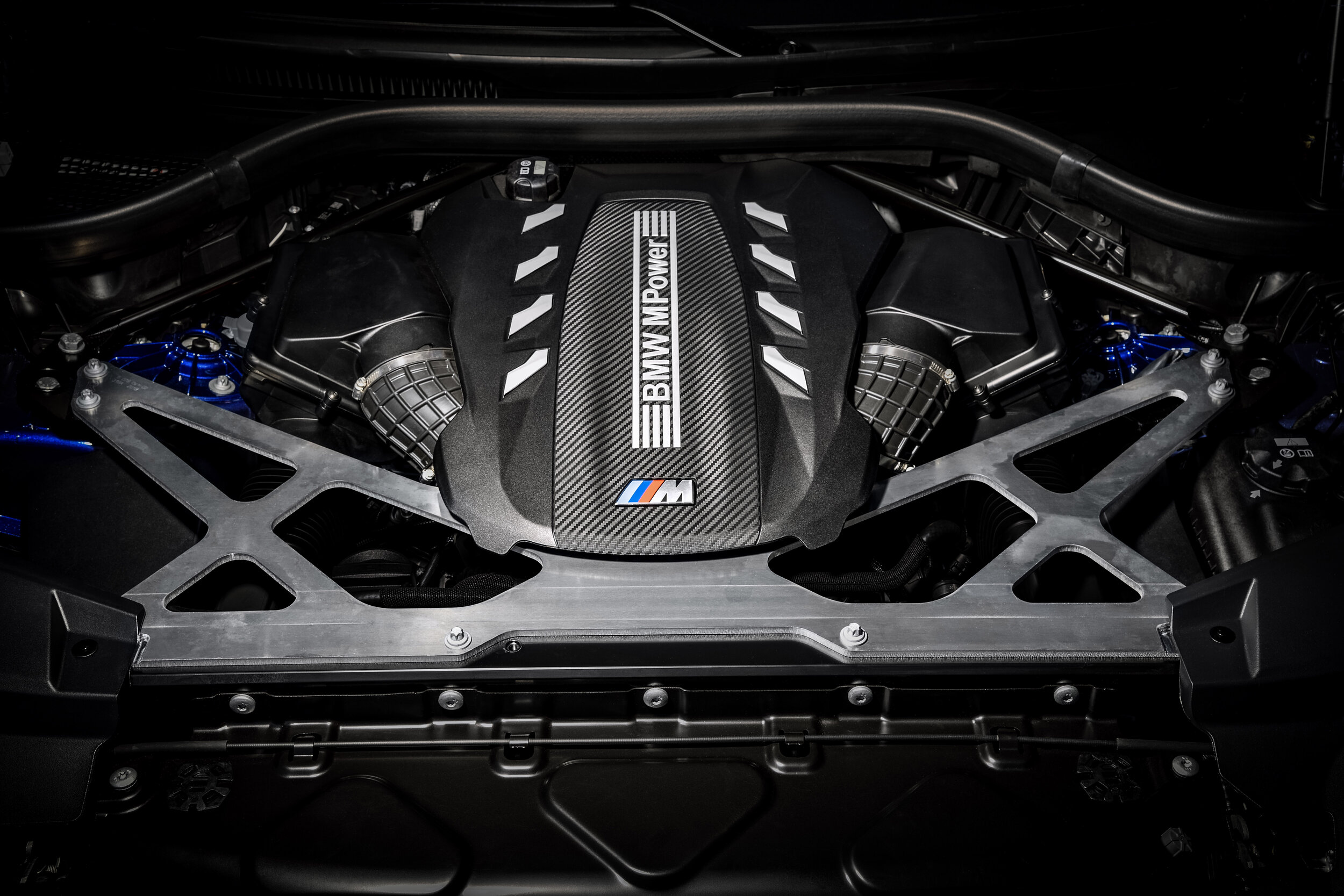AMG Purespeed: Heritage complete with helmet
/A radical variation on the SL 63 incorporating direct references to the world of Formula 1 racing and a past motorsport glory. Why not?
Read MoreA radical variation on the SL 63 incorporating direct references to the world of Formula 1 racing and a past motorsport glory. Why not?
Read MoreAustralian document share spills beans on big lugger’s RHD heart transplant.
Read MoreNow there are two C-Class cars running that new-age four behind the ’63’ badge - but the next one in the family will be a V8.
Read MoreIf full battery commitment doesn’t rock your boat, how about taking that old-school Mustang look with petrol-electric?
Read MoreHaving originally gone all dark on the open top version, Ford NZ’s had a change of mind.
Read MoreA whole new nose, a fresh interior and some additional grunt and tech are coming.
Read MoreWith its eight-cylinder engine having run its final lap, the C63’s future is now reliant on an electric-assisted four-pot.
Read MoreNew performance hero of downsized Mustang family holds big premium over previous line - including the special editions.
Read MoreFlagship edition’s sticker almost puts blue collar with blue bloods and shares with another Stingray price lift.
Read MoreEnhancements bring more oomph for final pure internal combustion model.
Read MoreThe car is being built in right-hand-drive and there’s one with the national distributor. That’s the good news. Nothing more, at this stage.
Read MoreElectric-assisted powertrain has F1 touches and wallops defunct V8 for grunt.
Read MoreTaking a farewell ride with the world’s most powerful mass-produced V8 was never going to be a cheap exercise. So it has proved.
Read MoreZR2 is designed for off-road use at speed.
Read MoreSaid to be ‘informed by 50 years of evolution’, the first all-new Range Rover since 2013 has been properly unveiled.
Read More
NO chance: That’s the response in precis from Lexus New Zealand when asked about potential of the just-revealed flagship of its new IS compact luxury sedan line reaching this market.
The local distributor, operating as an adjunct to Toyota New Zealand, has reiterated a view expressed in other right-hand-drive locales: Namely, that the new car is only for North America. Specifically, the United States.
What Kiwis knew as the IS-F, ultimately in a sizzler Redline edition, until it was curtailed in 2014 is now called the IS500 F Sport Performance.
Power is from the 5.0-litre naturally-aspirated petrol V8 seen under the bonnet of the RC-F and GS F performance cars, but also involved with the IS-F since it was born in 2008.
In this latest application it develops 352kW of power at 7100rpm and 536Nm of torque, at 4800rpm. That’s a 41kW and 31Nm lift over the outputs cited for the last of the IS-Fs, which in its own right moved with astounding alacrity.
The extra wallop would certainly enhance the pedigree when measured against two of the best in the business, the BMW M3/M4 and Mercedes Benz C63.
Lexus claims a 4.5 second 0-100kmh time. Kerb weight is rated at 1765kg, up just 65kg over the most exciting model in the current NZ line-up, the rear-wheel-drive IS350 F Sport.

Under the skin, the 'standard' IS's 'Dynamic Handling Package' has been fitted as standard to the IS500 to help cope with the extra grunt, with additions including adaptive suspension, a Yamaha rear performance damper (designed to reduce body flex and increase rigidity), and a Torsen limited-slip rear differential.
19-inch Enkei alloy wheels fill the arches – which are said to be 2.7kg lighter in total versus the regular IS F Sport's 19-inch wheels – hiding larger 356mm two-piece front and 323mm rear sports brakes.
Styling upgrades over NZ-familiar IS F Sport models largely comprise a 51mm-taller bonnet to accommodate the V8 engine, "lengthened" front bumper and quarter panels, a new rear diffuser with the brand's signature stacked quad exhaust tips, black window surrounds, black badging and a black lip spoiler.
Inside, the standard model's 10.3-inch infotainment touchscreen and digital instrument cluster are carried over, with changes limited to F Sport Performance badging on the steering wheel, metallic pedals, unique illuminated door sill plates and an IS500-specific start-up animation for the instrument cluster.
The full Lexus Safety System Plus driver assistance suite carries over to the flagship.
By chance, in an interview given to MotoringNZ.co, just weeks ago – when the IS500 was still under wraps – the potential of there ever being another IS-F was discussed by Lexus NZ boss Andrew Davis.
At that time, he said he did not know of anything on the horizon, but added: “There is speculation on IS-F and I think this speculation just shows there is still market interest in those sorts of cars.”
Lexus has RC-F and has had GS-F, so there’s logic to think there might still be space for another IS-F, he said then. That the old model has established a cult following also weighed into it.

TWENTY for the neighbour … how many in ‘our’ driveway?
‘Come back tomorrow.’
That’s the response from BMW New Zealand’s public relations people when asked about the national allocation of the most powerful and fastest accelerating car the German make’s specialist M performance house claims it has ever produced.
The local distributor appears caught on the hop in respect to the M5 CS … an intention to wait until tomorrow (January 28) to deliver the lowdown on the car puts it a day behind the rest of the world.
The model’s global announcement this morning was quickly followed by key markets, Australia including, confirming they will enjoy the new model which, though not a limited count car, is subject to a limited build run, in that it will be available for one model year.
It’s clear right-hand-drive markets are in line for the car, as Australia is taking 20, these arriving mid-year.
New Zealand’s allocation will likely be fair more modest – somewhere between one and nine would seem a safe bet. Price? Also a guesstimate. Australians are paying the equivalent of $327,000.
The car’s potential collectability status is high: You’re buying into a similar formula to that set out by previous CS-badged BMWs (M2 CS, M3 CS and M4 CS) and the next step up from the M5 Competition, but with many upgrades, including the most powerful engine in the history of BMW M, to create a sharper, more track-focused package.

Specific features are a reprogrammed four-wheel drive system, bespoke chassis tuning and a series of lightweight carbonfibre parts that contribute to a 70kg weight reduction over the M5 Competition.
Anyone buying in will likely stick in straight into the pool room, though let’s hope they might follow the brand’s recommendation and divert en route to a motor racing circuit.
The familiar 4.4-litre twin-turbo V8 has been worked over to output 467kW, with torque rated at 750Nm.
The power is well above that from the standard M5’s 412kW/680Nm, but it’s just a 7kW gain and the same torque loading as that offered by the M5 Competition.
BMW nonetheless attests the car will run to 100kmh from a standing start in three seconds – so, a tenth quicker than the Competition – knock out 0-200kmh in 10.4s and achieve an electronically limited top speed of 306kmh.
So, maybe not a race track but a very long runway if you want to have a chance of seeing the latter.

The revised M5 CS engine also gains a redesigned oil pan with an additional sump and indirect charge air cooling. Further changes are focused on the engine mounts, which has a spring rating of 900N per millimetre for a more rigid mounting and a smoother transmission of power to each wheel, according to BMW’s performance division.
The M5 CS’s chassis is described as being based on that of the M5 Competition but with shock absorbers originally developed for another heavy hitter, the M8 Gran Coupe Competition, that reduce the ride height by 7mm.
The new dampers are claimed to reduce the fluctuation in wheel loads. In combination with new spring bearings for the damper control measures front and rear, as well as standard-fit 20 inch wheels shod with 275/35 front and 285/35 rear Pirelli P Zero Corsa tyres, they are claimed to greatly improve on-the-limit handling.
The increase in performance has resulted in M carbon-ceramic brakes being fitted as standard. They use six-piston fixed calipers at the front and single-piston floating calipers at the rear and are claimed to weigh 23kg less overall than the steel disc system that comes as standard on the M5 Competition.
Additional weight savings for the M5 CS have been achieved through the adoption of a carbonfibre-reinforced plastic (CFRP) bonnet. The car also uses carbonfibre for the front splitter, mirror caps, rear spoiler and diffuser.
A gold bronze grille and headlights tinged with yellow are also CS specific and the interior also has specific fitouts, notably the rear bench seat being dumped for two individual chairs. The outline of the legendary Nürburgring Nordschleife circuit is displayed on the head restraints. On the front seats, the restraints also have illuminated M5 logos.


FOUR Twenty, 441, 450, 460 – pick a number, right?
Always with awareness that where you land on the kiloWatt chart also dictates one of two badge preferences when selecting a German premium all-paw performance sedan that’s not an Audi.
The first and third counts put you with Mercedes AMG, and behind the wheel of an E63 AMG in standard and S formats. The remainder with a Five Series fettled by BMW’s M Division, primarily as the ‘starter’ edition, ultimately in Competition mode.
Yup, it’s mid-life upgrade time for two supercar-slaying sedans and, as always, where one goes, the other is quick to follow, with both laying down big numbers.
Which also relate to? Well, torque, which optimally hits 750Nm behind the blue and white roundel and 800Nm behind the star, top speeds - 300kmh optimally from the E63 S, another 5kmh more with the Competition (with the optional M Driver’s package fitted) – and, of course, those all-important 0-100kmh times: just 3.3 seconds for the M5 in hottest fettle, which makes it 0.1 faster to the legal highway limit from a standing start than the most potent E 63. There are economy figures too but … not of any particular interest, right?
So, which to chose? It might all come down to price, which is still a mystery for our market, though potentially the current stickers won’t be too far shy of the new prices, and availability … which means quarter three for the Munich monster, some time prior to Christmas for Affalterbach’s.
The other important thing to recognise is that, while both makes are talking of these incoming missiles as being ‘new’ models, they really mean ‘massaged.’ Quite subtly, for the most part.
Those twin turbo V8 engines – a 4.4‑litre from Beamer, a 4.0-litre out of the other crowd – gearboxes (eight‑speed auto with BMW, nine-speed AMG), and the fancy all-wheel-drive - that can be configured in a special rear-drive mode with the M5 - are all as before.
What’s incoming is the same range of minor cosmetic updates found on the recently revised 5 Series So the M5 now sports the updated kidney grille which extends a little further down into the bumper and has a one-piece chrome surround. The new front end gains larger air intakes at the sides while the main aperture is now hexagonal. The LED lights front and rear are new, as is the rear bumper.
Interior revisions also mirror those on the standard 5 Series, with buyers getting a new 12.3-inch digital instrument cluster and a larger infotainment screen. Electrically adjustable sports seats and sun protective glass come as standard, while a Harmon/Kardon stereo, head-up display and an Alcantara headlining can be specced as optional extras, as can a Technology Plus pack that adds front and rear seat heating, a heated steering wheel, soft close doors and a seat massage function. The M5’s Ultimate Pack builds on this specification with a carbon fibre engine cover and Bowers and Wilkins surround sound system. A lot of comforts for a performance car? That’s your modern M5 customer.
There is a new 20-inch wheel design while the brake calipers can be finished in black or red as an alternate to the usual blue. The Competition’s are gold, as before.
Chassis upgrades over the standard BMW 5 Series include uprated dampers, stiffer engine mounts and larger disc brakes, with fixed six-piston calipers up front and single piston calipers at the rear. Buyers can also opt for a range of M Performance extras, such as coilover suspension and carbon fibre aero components. The Competition model sits seven millimetres lower.
There’s a broader range of standard driver assistance technology, too. Buyers get lane- keeping assist, lane-change assist, a 360-degree parking camera, and BMW’s Parking Assistant Plus, which can take control of the car’s steering when reversing into spaces. BMW also now offers a Drive Recorder function, which uses the car’s built-in cameras to record footage from around the vehicle.
So how does the AMG respond? Basically, by following the same plot.
The revamped styling also includes a larger grille created in an effort to differentiate it more from the wider E-Class range and aerodynamic tweaks to optimise both grip and airflow to the engine.
Although the powertrains’ outputs are unchanged, Mercedes-AMG says considerable tuning has been carried out to widen the E63’s performance window. Work has also been done to refine the dampers and chassis, while the dynamic engine mounts on the E63 S have been tweaked so they adapt more quickly to driving conditions.
Further development has been carried out on the AMG Dynamic Select software, which adjusts systems such as the drive programmes, all-wheel drive systems and ESP stability control. The AMG Dynamics Plus package, which includes a Race drive mode and Drift function, is standard on the E63 S and is offered as an option for the base model for the first time.
The front bodywork of the machine has been honed for aerodynamic balance, with AMG engineers and aerodynamicists focused on reducing wind resistance and increasing high-speed stability. The wheel arches have been enlarged by 22mm to accommodate a wider track
At the rear, there are flatter brake lights, a reshaped apron, which has also been aerodynamically optimised and a new diffuser.
The standard E63 has new 19in alloy wheel options, while the S version that’s always been favoured for NZ gains new 20 inch aerodynamically optimised five-spoke alloy designs.
There are new paint colour options previously offered on the Mercedes-AMG GT range only and the usual optional AMG Night Package adds extra styling tweaks, including a gloss black finish for the mirrors, window frame and exhaust pipes.
Inside, the E63 feature similar tweaks to the rest of the facelifted E-Class range, including the latest version of the MBUX infotainment system and digital instrument display, both of which offer bespoke AMG display options.
There is also a new twin-spoke AMG Performance steering wheel with haptic feedback controls and offered with Dinamica microfibre or leather, or combination finish. The wheel includes a ‘hands on’ sensor that will trigger warnings and, eventually, activate emergency brake assist if it detects the driver does not have their hands on the wheel for an extended period. Mated to the new wheel are larger aluminium paddle shifters that can operate the nine-speed transmission.
TWO bigfoot BMW M models whose hugely potent engine is already defying the downsizing trend are strong enough to beat off Covid-19.
That sentiment about the X5 M and X6 M is aired by BMW Group New Zealand as it opens the order book for the updated editions of the juggernaut sports activity vehicles, which share the same mighty twin-turbo V8 engine.
BMW Group New Zealand has stuck to tradition by deciding only the best will do for its customers.
Thus it is only bringing in the Competition, which in return for being the most expensive of the two specifications is also – with 460kW and 750Nm - the most powerful and best-kitted.
With the country gripped by a national shutdown of undetermined duration and also bracing for a severe economic impact, will the buyer base still have the discretionary spend to afford models that respectively price at $219,900 and $225,600?
BMW Group New Zealand managing director Karol Abrasowicz-Madej says it’s a fair question, but he’s optimistic the big stompers don’t become showroom queens.
In part, it’s because the M brand following is incredibly strong here. “We have a lot of loyal customers and we have a lot of interest coming from them.”

Also, there’s clear recognition that the models are pretty much without rival in their category. “They are very extrovert in their character.” So, even in this time of national inaction, there’s been plenty of “good inquiry” coming from owners of competitor cars.
So while it’s all a matter of wait and see until the lockdown lifts and business can resume, “we think they will find a place in Kiwis’ hearts.”
“I’m hopeful of a good take-up though, at the same time, any prediction at the moment about volume is going to be really hard.”
So they’ll survive, and so will the engine that also slots into the also NZ-available M5 sedan and M8 coupe and, in the sport activity vehicle application, lends ability to hit 100kmh in a claimed 3.8 seconds, 0.4 sec quicker than their forebears, aided by an extra 37kW of thrust.
Is this the final swansong for the V8? As much as BMW recognises that it’s becoming every challenging to maintain this kind of engine in the face of ever-tightening environmental regulations, in Europe especially, it says there’s still a good case for having it.
While acknowledging that various emissions rules are making his life more difficult, the head of powertrain project management for the X5M and X6M, Axel Theiling, reminds his team’s opus is far from being an old-school donk.
Built around a 90-degree vee angle and a sleeveless closed-deck crankcase, the 4.4-litre motor is a very sophisticated motor, with Valvetronic variable valve lift and direct fuel injection, as well as a pair of high-flow twin-scroll turbochargers.
Those ingredients allow for some reasonable emissions and economy. For a V8.
Still, make no bones: It is an engine designed foremost for performance rather than eco purity. Hence the forged crankshaft and a lubrication system built to cope with the rigours of track use. Also why the eight-speed automatic has manual modes and the M sport exhaust features four outlets so you can hear what the V8 has to say.
Other highlights include Adaptive M Suspension Professional with various modes, M Servotronic steering with Comfort and Sport settings, a rear-biased 4wd system, Active locking M differential and M Sport brakes with six-piston calipers acting on 395mm drilled and vented discs up front. A 100-0kmh emergency stop of 32 metres is claimed.
The M-spec X models stand out from the mainstream editions through adopting extrovert design features such as enlarged air intakes and an oversized wheel and tyre package (295/35R21s up front and 315/30R22s rear). They also have laser lights.
The cabin includes M multifunction powered and heated sport seats finished in full leather ‘Merino’ and Alcantara headlining, along with four-zone air con and head-up display. A panoramic sunroof, wireless charging and Apple CarPlay are included.
Safety and convenience items include BMW Driving Assistant Professional, Parking Assistant Plus and BMW Live Cockpit Professional with a pair of 12.3-inch LCD colour displays.
Deliveries are set to begin next month.










MotoringNZ reviews new cars and keeps readers up-to-date with the latest developments on the auto industry. All the major brands are represented. The site is owned and edited by New Zealand motoring journalist Richard Bosselman.